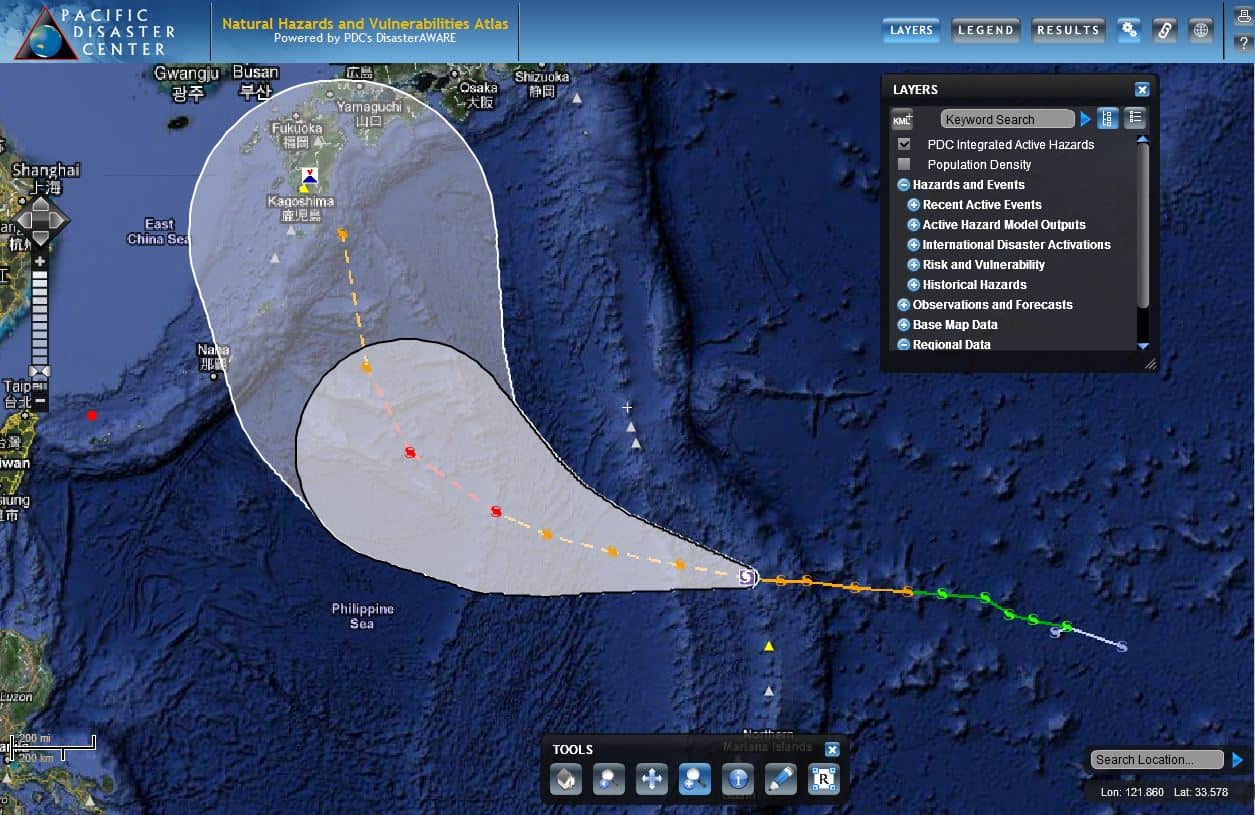Tropical Cyclone Iselle was downgraded to a tropical storm shortly before the eye crossed over the Big Island, which is only the second time in recorded history for a storm of this magnitude to hit the Big Island. Iselle significantly weakened as it interacted with the terrain of the Big Island and due to nearby wind shear, yet tropical cyclone rains, gusty winds, and high surf along easterly and southerly shores kept residents under a Tropical Storm Watch for quite some time.
The heavy rains and winds from Iselle downed trees causing power outages across the islands and temporarily closed transportation routes. Preliminary damage and debris reports were quickly collected and shared among the emergency management community using Pacific Disaster Center’s EMOPS system in order to facilitate efficient response efforts.
Prior to the event, PDC’s Disaster Services Team was positioned to support emergency managers with map requests across the state, and worked closely with stakeholders to integrate the information as it became available. Many PDC developed products have been released to the public via social media sites (Facebook and Twitter) by the @DisasterAWARE account, and on the PDC website at: https://wwwwww.pdc.org/web-story/Aug2014/. PDC continues to support requests and can be reach at response@pdc.org.
Estimated impact and tropical cyclone rainfall products for Hurricane Julio are also being developed and can be found on the PDC website. The Center will continue to monitor Julio as tracks near the State.
PDC’s EMOPS system provides emergency managers a secure environment for assessing, updating, and sharing critical information. If you are an emergency manager and would like access to EMOPS, contact PDC at disaster@pdc.org.
For information on what to do following a natural disaster:
• Review FEMA guidance and find applications for assistance, or
• Parents and teachers can more on helping children cope at NASP.
For more information on Tropical Cyclone Iselle and Julio:
• Find out about how PDC helped to prepare the state,
• Read an early update on TC Iselle and Julio,
• Visit the NWS National Hurricane Center for the latest updates,
• Take a look at information from NASA,
• Refer to NOAA’s explanation of the Saffir-Simpson Hurricane Wind Scale, and
• Explore FastFollow to receive SMS messages from DisasterAWARE.
More resources for hurricane safety and preparedness:
• Read about this year’s 2014 Central Pacific Basin Hurricane Season,
• Hawaii Hazards Awareness & Resilience Program (HHARP) to enhance community resilience,
• Read about how parents can help kids learn about disaster preparedness, and
• Find out about Hawaii’s Statewide Hurricane Preparedness Exercise.





